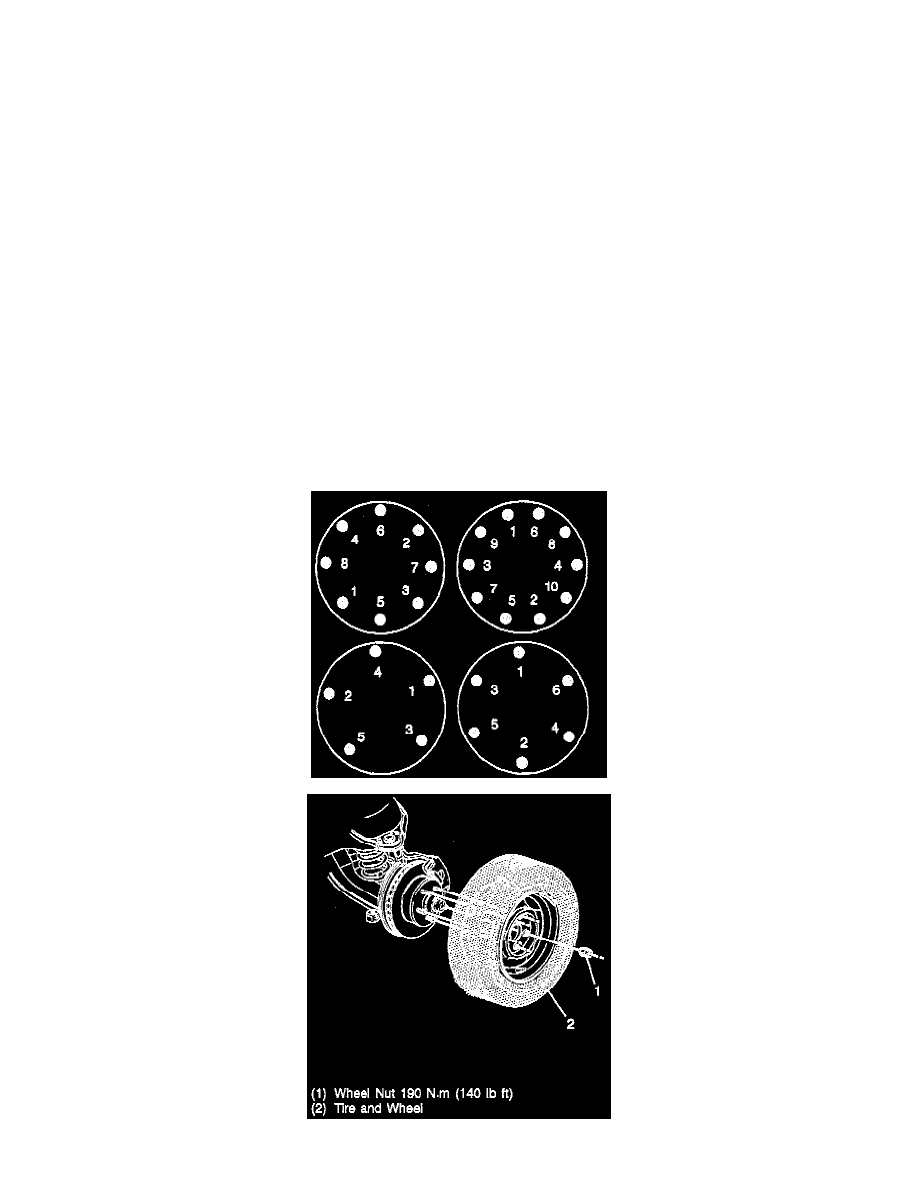G 1500 1/2 Ton Van V8-5.7L VIN R (1997)

Wheels: Service and Repair
On-Vehicle Service
Wheel Removal
Penetrating oil has been found to be effective in removing tight wheels. However, if it is used it should be applied sparingly to the hub surface only.
CAUTION: If penetrating oil gets on the vertical surfaces between the wheel and the rotor or drum, it could cause the wheel to work loose as the
vehicle is driven, resulting in lose of control and an injury accident.
NOTICE: Never use heat to loosen a tight wheel. It can shorten the life of the wheel, studs, or hub and bearing assemblies. Wheel nuts must be
tightened In sequence and to the specified torque to avoid bending the wheel or rotor.
Sometimes wheels can be difficult to remove from the vehicle due to foreign material or a tight fit between the wheel center hole and the hub or rotor.
Excessive force such as hammering the wheel or tire can cause damage and is not recommended. Slight tapping of the tire side wall with a rubber mallet
is acceptable.
The wheel can be removed without damage as follows:
1. Tighten all the lug nuts on the affected wheel.
2. Loosen each nut two turns.
3. Rock the vehicle from side to side to loosen the wheel. Or rock the vehicle from forward to reverse allowing the vehicle to move several feet in
each direction. Apply quick hard jabs on the brake pedal to loosen the wheel. If that did not free up the wheel, then rock the vehicle again from
side to side as hard as possible using one or more person's body weight to loosen the wheel. If the wheel is still tight, repeat the procedure.
Tire and Wheel Installation
